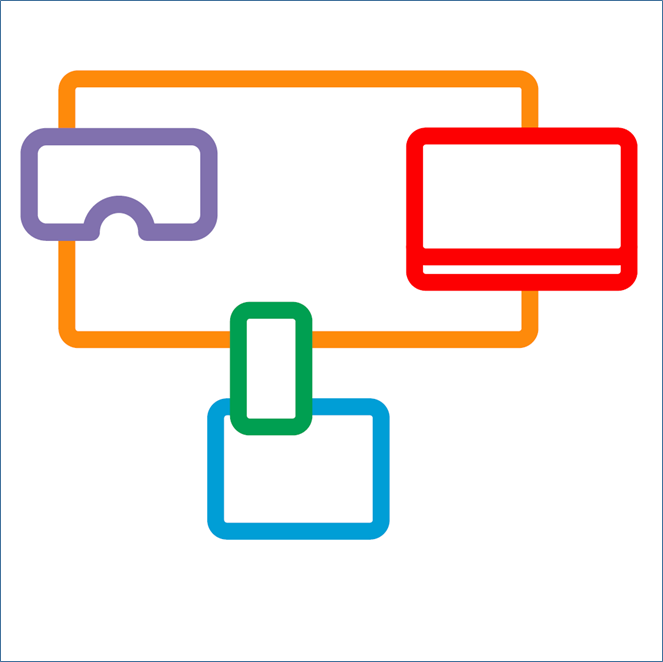MotoGP at Home – the video
We are pleased to announce that we have made a short video of our MotoGP at Home Experience. You can find it on our videos page. https://2immerse.eu/videos/
The MotoGP experience is now (January 2018) in test. We are taking our 8 test kits out to users, and they are trying it out. Users have been screened on the basis that they are MotoGP fans (not everyone is) and watch it on TV. We had a small hiatus during Christmas (this gave us chance to upgrade the software on the machines too!) but with the Christmas decoration tidied away we are back out testing again. To date we have had 35 responses and by 25 January we should be pushing 90 responses. Our target is 100 responses.
What we want to know is, do our users prefer the multi-screen experience to the single screen experience?
The whole thing takes about 90 minutes, during which time users can explore the additional information and features that can be accessed and controlled on the companion screens. The questionnaire they complete after the trial probes their overall reaction to the experience before going deeper into their spontaneous recall of features (what do they remember it by?) and then probing their use, and perception of, the feature set on offer.
The MotoGP experience needs a specific small computer to act as set top box, as I wrote earlier https://2immerse.eu/its-trial-time/ . Because of this not many of you will get to play with it directly. The next best thing, in terms of communicating what this experience includes, is the video.
The trials are being conducted independently from the project by Acumen Fieldwork http://www.acumenfieldwork.com
We look forward to receiving a full set of results in due course and to comparing the questionnaire responses with the logs we collect from the servers. What features were used most? Were any features not used? These are all questions we hope the logs will tell us.
And, as the video expresses, our thanks are due to Dorna Sports, BT Sport and North One Television for their support during the development of the MotoGP 2-IMMERSE project.
READ MORENever work with children or animals

This screen grab, taken from the children’s BBC TV show Blue Peter from 1969, captures the slippery moment when a baby elephant caused havoc on live TV. It could also be the source of the guidance that, in television, it is better not to work with children or animals. Since I have been familiar with the guidance for so long it leads me to wonder why we recently attempted to work with 200 people of school age to help us assess some of our multi-screen television presentation ideas.
The opportunity came as part of British Science Week, a laudable initiative to engage young people with careers that depend upon education in Science, Technology, Engineering and Mathematics.
We devised a very short test schedule that allowed our young judges to give their opinion of different presentations of football, some single screen and some using three screens. We managed to get 200 test subjects to complete our assessments within about 8 hours of tests over four days. So in terms of efficiency the method was a success. We also learned from it:
- We learned that no one reads instructions
- We learned that people need to be shown, as well a told, how to fill in forms.
- We learned that many people have no interest in sport whatsoever – they told us as much
- We learned that when it comes to three screen presentations of football, well whilst the data are not that conclusive we think they expressed their preference.
Full details of the experiment have been written up and submitted for publication elsewhere. The results will also find their way into our deliverables in due course.
READ MORE
Researching the landscape of live-to-digital theatre. By John Wyver, Illuminations
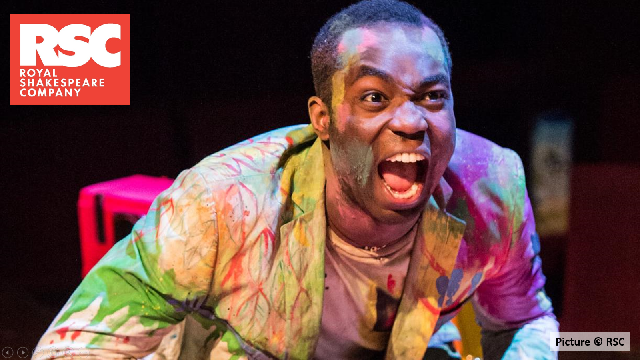
Paapa Essiedu as Hamlet in the RSC 2016 production.
Last month the three key agencies concerned with theatre in Britain – Arts Council England (ACE), UK Theatre and Society of London Theatres – released a substantial and significant research report that is an important contribution to understanding the impact on digital distribution of theatre productions. Engaging with theatre streamed to the home is the focus of the first of the 2-Immerse case studies, with theatre streamed to schools planned as a follow-up, and so the report From Live-to-Digital (which is freely available here) contains much that is of interest for our work. The ACE response is also well worth reading, and can be downloaded here.
From Live-to-Digital notes that there is a long history to capturing live performance on film and for television. It is only over the past decade or so, however, that, first, opera and subsequently theatre companies have been involved with the digital transmission of live or “as live” (that is, recorded during a stage show) performances to locations far from the auditoria in which they are taking place. Audiences are now very used to watching broadcasts by the likes of NT Live and RSC Live from Stratford-upon-Avon in cinemas. Increasingly, too, people are accessing performances online, often made available by smaller companies like Cheek by Jowl and Tara Arts. The broadcasts have been broadly welcomed, in large part because they make shows available to audiences who might not be able to travel to the theatres in which they are playing or because they are unable to afford tickets. But concerns have been expressed too, including from smaller theatres who worry that the audiences for these mediated forms are having negative effects on the numbers of those attending live shows. Hence the need for detailed research to understand the impact of this new form that is not quite theatre and not quite cinema but a new and potentially troublesome hybrid.
On the key question for the arts world of whether digital distribution means that fewer people are going out to the theatre, the report concludes that the available data reveal minimal impact on live attendance. ‘Theatregoers,’ it determines, ‘are neither more or less likely to attend live theatre if their experience it digitally.’ Which suggests that this new form isn’t to blame for falling attendances, but is disappointing for theatres hoping to encourages new audiences through their doors. But in relation to attracting hard-to-reach audiences, which in this context often means younger people and those from BAME communities, the report indicates that those who stream performances at home are younger and more diverse than audiences for live theatre and ‘Event Cinema’ (which is the industry name for the likes of NT Live). For 2-Immerse, which is directly concerned with enhancing and enriching the streaming experience at home, this indicates that our work may be welcomed by those aiming to extend the audiences for live theatre.
As a producer, I was surprised by the report’s finding that while economics and convenience are key drivers for audiences for live-to-digital performances, the question of whether or not they are actually ‘live’ is less important for viewers. My sense both as a maker of these broadcasters and as an enthusiastic punter watching them in the cinema is that the jeopardy of a live broadcast enhances interest and engagement. But it seems that I am in a minority, since only 17% of the Event Cinema attendees surveyed said that ‘liveness’ is ‘very important’ to them.
A last key finding of the report is that audiences do not believe live-to-digital performances are a substitute for live theatre, but rather that they constitute a significant and distinct experience. ‘Interviews and focus group conversations,’ the report says, ‘underscore that there are still significant advances to be made within these new media; understanding how audiences engage with and experience new art forms digitally, particularly at home, is in its infancy.’ Those of us working on the Theatre at Home trial for 2-Immerse concur with this, and indeed hope that our work can make a contribution to both that understanding of current experiences and to the ways in which it can be improved and made more meaningful, especially through improved forms of social activity, for audiences in the years to come.
John Wyver is Director, Screen Productions for the Royal Shakespeare Company and the producer of RSC Live from Stratford-upon-Avon.
READ MORE‘A great thing’: watching theatre at home since 1939
This post is from John Wyver. John is a writer and media producer. He is a historian of television with a particular interest in broadcasting, film and the arts. He is also responsible for the theatre based prototypes we are developing in 2-Immerse. For more blog posts from John, look here.
John Wyver, 14 August 2016
One evening in early January 1939 the critic Grace Wyndham Goldie sat down before her ‘televisor’ with a question on her mind. As she wrote in The Listener just over a week later she wanted to know whether or not ‘this “straight from the theatre stuff” [was] going to be any good?’ Flickering onto her screen came BBC Television’s outside broadcast from the Phoenix Theatre where Peggy Ashcroft was playing Viola in Twelfth Night. This was only the second occasion on which BBC cameras had ventured out to a theatre to transmit a full-length play; the first had been three months earlier when J.B. Priestley’s comedy When We Are Married had been broadcast to what were perhaps 10,000 sets in and around London. Now, as Wyndham Goldie watched Shakespeare’s comedy of deceit and disguise, ‘the miracle of television came home to me afresh.’ Despite feeling that the experience of seeing the play itself was like ‘watching the action through opera glasses’, it was as if she had been transported to a plush seat in the stalls. ‘There was the actual feeling of being in a theatre. There was the view of the stage and the buzz of conversation and the orchestra tuning up and the curtain rising… Now this is a great thing.’
For nearly eighty years, television has sought to achieve this ‘great thing’ of putting across ‘the actual feeling of being in a theatre’. Before the Second World War there were further broadcasts from the West End, including of the musical Me and My Girl with its hit song ‘The Lambeth Walk’ (and three minutes of precious footage from this survive in the archive). When the television service resumed after the war, West End theatre managers were less keen to have their shows broadcast by an upstart medium that was increasingly viewed as unwelcome competition. Until, that is, Brian Rix’s farces from the Whitehall Theatre demonstrated how effective television could be at selling tickets for stage shows. In the 1950s television broadcast live from the Shakespeare Memorial Theatre in Stratford-upon-Avon and from the Royal Court, screening a substantial extract of the ground-breaking 1956 production of John Osborne’s Look Back in Anger (although frustratingly this was not recorded). Productions from the Old Vic and the National Theatre followed, as well as stagings by companies in Bristol, Birmingham and beyond. Increasingly, however, television drama came to mean not theatre relays but original plays and series written by the likes of David Mercer and Dennis Potter for production in the studio. But an interest remained in showing the stage on screen, whether that was the Royal Shakespeare Company’s epic Nicholas Nickleby, recorded at the Old Vic, or a production of Richard II, shown live from Shakespeare’s Globe in 2003. Last Christmas, BBC Four demonstrated how potent the idea remains when it offered a recorded version of Gypsy! from the Savoy Theatre. Then in 2009 NT Live started theatre broadcasts in cinemas with a presentation of Phèdre. This inaugurated a rapidly developing and much-loved form that has been picked up by the RSC, Kenneth Branagh Theatre Company and, most recently, the Almeida Theatre with Richard III. As anyone who has been to an ‘event cinema’ screening of this kind will recognise, they create ‘the actual feeling of being in a theatre’ in part by assembling around you an audience which shares the drama and the comedy – and often the applause.
Responding both to theatre on television and in cinemas, one of the key aims of the 2-Immerse watching theatre at home trial is to create that social sense of watching with an audience even as, seated on your sofa, you have ‘the actual feeling of being in a theatre’. So for our first prototype we are exploring how best to enhance a broadcast screening with sharing and responding and chatting with others who are watching at the same time. The long tradition of watching theatre at home suggests that there is an interested and eager audience, and what we hope we can do is ensure that ‘this “straight from the theatre stuff”’ can be even better and richer and more interesting than Grace Wyndham Goldie found Twelfth Night back in 1939.
READ MOREIt’s not ‘or’, it’s ‘and’.
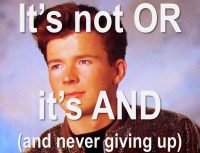
Anyone who has witnessed the machination of senior leaders as they try to make clear the actions and behaviours that will drive positive change in an organistaion will be familiar with the “It’s not ‘or’, it’s ‘and’”. So what is such a phrase doing in research project?
Well it came about as John Wyver from illuminations was visiting project colleagues from BBC and IRT as they were embarking on some synchronisation experiments. John Wyver is leading on two of the prototype services being developed in 2IMMERSE, both are related to filmed theatre and the way it is presented, you can read about the At Home case here and the At School case here.
The question the experiments from the BBC and IRT was setting out to answer was ‘how closely synchronised should a script, displayed on a second screen device like a tablet, be to the action being displayed on the main TV screen?’ This synchronisation is, we must imagine, one of the more generous levels of synchronisation challenges in the project. At least it is generous when compared to the synchronisation of different camera angles on the same action, which could be a requirement of the MotoGP and Football prototypes (I suspect that this will require near frame accuracy, i.e 0.02-0.04 seconds) but it will be interesting to find out. Now, we haven’t got the answer yet for our script synchronisation problem. What do you think 1-2 seconds?
Important as this script synchronisation question is, other questions also need to be answered such as:
- how do users think they would use the synchronised script – i.e.. how often would they look at the script, and for how long?
- why might users look at a script? What benefits do they think it might have? Do they think it will help with audibility, will it help clarify meaning, or enhance the experience in some other way?
If script synchronisation is important, and I think it is, these question are also important if not critical. It’s not that we should answer only these motivation and utilisation questions though; you see it’s not OR it’s AND. And, as Rik says, never giving up.
READ MOREKISS: Keep It Simple, Stupid

It’s easy to find yourself going off on one – and useful to be called back.
That happened to me the other day when I was speaking to some BT TV colleagues about our work on the Sport in Pubs Prototype. These colleagues have been serving the Pub market with TV deals for years. They understand it.
I pitched what we are planning in 2-Immerse to this team. The response I got was cool, but helpful. In general I surmised they thought that there may be something in what we’re doing but the ideas we have had so far – and the way we present them, are not going to impress pub chains. This is the key stuff I think I need to remember:
1. “Our” customer is the landlord or the pub chain, not the punter
2. Keep it simple
3. A bad result for a landlord is for people to leave/(not enter) the pub because they can’t /(expect to not be able to) see the match. Ergo. Use all screen real estate to show the match not the “fluff” (stats, replays, manager cam, etc)
4. In pitching to pub chains try not to be too prescriptive. It may be worth telling the story of football in pubs (1990 England vs Germany newspapers reporting ‘the pubs will be empty’; B&W TV on the bar; projection TVs, very large screens; and now multiple flat panels giving lien of sight to all corners of a pub) and emphasise that what we want to do is to further improve the experience of watching football out of the home.
5. The personal mobile screen may be valuable for the “fluff”.
6. Experiences that are bespoke to the user, and in particular to the user in that pub, may make sense and it may be good to concentrate on developing such experiences.
7. Different audio (no commentary, selectable commentary) were better received as ideas than the video based stories in the deck.
8. Do try and build stories that may enhance the social nature of watching Sport in a pub
We must adapt our current use case to fit with this…
All feedback, I was once told, is a gift.
Signing On
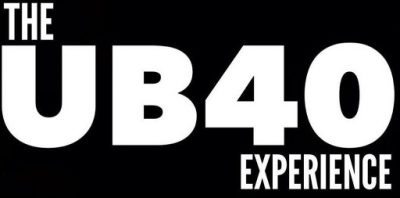
Today we had a really interesting debate within the project about sign-on and identity and about whether we needed to build ‘all that stuff’ into our prototype experiences.
It is, of course, a bit complicated. Ideally we’d have a great simple-to-use single-sign-on process that was secure, complete and scalable. But we are a bit nervous of the overhead that might put on the development teams. This stuff is largely “done”, repeating it looks like an engineering job, not research.
As the debated continued and I listened and learned; I realised the question has got layers. When signing on, am I a person, or a household? Am I known or am I anonymous? How does signing on work if I have an experience that depends on me using both a shared device and a personal device? And what am I prepared to do, signing-on-wise, if I am accessing a service in a public space like a pub? What kind of sign-on makes sense if I am joining a video chat session with friends vs joining a session in a pub? What if I wanted to place a bet?
The correct solution is not always obvious, but faced with a stupid log-in process we all recognise it and, from experience, I know it can make me abandon a purchase or a transaction.
Fortunately this is a research project and one of the work packages we have defined is intended to look into issues like this. So we were able to close our debate in violent agreement. We agreed that our platform should be prepared as if it is to be adopted as a real services beyond the project. This means that security and single-sign-on issues must be considered and that solutions for these issues must be defined. It does not mean all these capabilities will necessarily be built and instantiated.
We also agreed that, to define appropriate sign-on capabilities, we would carry out work in our User Interaction Design work package to explore what the ‘right’ sign on procedure might be for each of the different situations described in the storyboards for our prototype scenarios.
We didn’t resolve all the questions the debate created, but I was reassured that the project does have the structure to answer the questions.
Signing off.
READ MORE
FA CUP
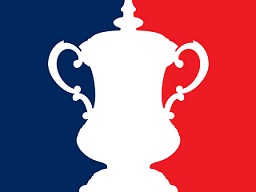
Having installed a new sound driver and toggled a few selections and got Audacity to start recording (even though I couldn’t actually hear the commentary) I retired to actually watch the match. I found myself, for the first time in decades, taking more than a passing interest in the FA Cup final. This isn’t because of anything the FA Cup Final did it to me, it had more to do what with what we, in the project, are hoping to do the FA Cup Final.
The way the TV coverage of the FA Cup has developed since it was first broadcast in 1938 is well documented by those who have had the pleasure and privilege of being closely involved with it. Brian Barwick’s book “Watching the Match – the inside story of football on television” is a good source of insight into the way the coverage has developed to date and accounts many of the key moments in the history of the coverage including a rather unseemly tussle between rival film crews in 1969 seeking to create the best coverage of the event. Coverage of the FA Cup is a landmark production that creates indelible memories, particularly for young, football-obsessed boys, across the country.
So what will 2-Immerse be doing that is different? Well, as can be seen in the high-level storyboards, 2-Immerse has watching football in a pub as its focus, rather than watching at home. This means that the programming we wish to create is intended to work best in a social, participatory atmosphere rather than in a sitting room. The editorial impact of that difference will be key to making that work but key to providing the editorial flexibility is the approach to production.
Traditionally the coverage is assembled for delivery to one ‘main’ screen. 2-Immerse believes that, with IP delivery and emergent standards (like HbbTV2.0) that allow broadcast and broadband content to interwork, there is an opportunity to create a flexible presentation of the coverage that can adapt to best suit the available screens and will be a better in-pub experience than watching the version designed for broadcast to our homes.
What we want to do is to enable a system that can dynamically and responsively fetch content and arrange it in appealing ways using the resources (screens and loudspeakers) available.
If, for example, we consider the audio; we’d like to retain flexibility about what is heard so we can choose a neutral or a partisan commentary. Some pubs may well be partisan and would enjoy a commentary that was biased and had a focus on let’s say Crystal Palace rather than Man Utd. Some pubs may attract and encourage a viewership that is so engrossed in the event that they care little for the studio commentary preferring instead to import just the stadium atmosphere by relaying the chants and angst of a partisan crowd. We’d like to explore these options and wok with experts, the pub industry and with viewers to establish which of these ideas might fly.
There are also many way we could use multiple screens, we aim to build some options and test these with users and professionals. They will let us know what they think ‘works’.) Our scenario describes a few ideas we want to explore. These include ideas like having a screen showing the output of a player cam; having screens displaying the actions of the respective managers; having screens showing team sheets; having screens showing performance stats; or having screens replaying key moment of the match-so-far to enable late-comers to understand what they’ve missed. All, or none, may really be attractive.
To test these ideas we plan to build a demonstrator and that is why I took slightly more interest in the FA Cup than usual. Colleagues in BT Sport are making available to us recorded individual feeds of over 12 cameras and we have captured commentaries from different sources including various radio stations and an array of in stadium mics including a sound field microphone to allow us recreate and affect the sound presentation using Dolby Atmos. With these sources available to us we will be able to experiment with different layouts, trying different views on different screens and experimenting with different audio. Now we need to collect, log, align and prepare the terabytes of content and begin to play with the emerging set of tools that the software teams are building so we can start to see what the experience is like when we start presenting this content in different ways. But that is for later on.
But now I’d better uninstall that sound driver and see if I can get to hear the audio coming from my PC.
READ MORE

